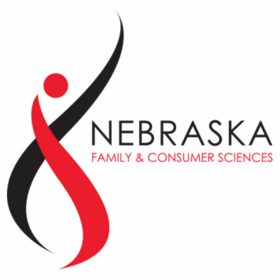Families Unit
Lesson Topic:
Family Functions
Lesson Description:
Family Functions & Roles of Parents and Children
Learning Goals/Outcomes:
Day 1 - Students will be able to define “family” and discuss the multiple purposes of a family.
Day 2 - Students will be able to list/recognize the different stages of the family life cycle and characteristics that go along with it.
Day 3 - Students will describe the purpose of roles, why they are important and what role they play in their family.
Day 4 - Students will apply the content they have learned the past three days to their own families.
Nebraska Standards:
HSE.HS.1.10 - Analyze roles and responsibilities of parenting.
HSE.HS.1.10.a - Analyze parenting roles across the lifespan.
HSE.HS.1.11.a - Compare and contrast different types of families.
HSE.HS.1.25.a - Acknowledge and apply differences in cultural identity, values and beliefs to care and services for children and families
HSE.HS.2.2 - Build on individual and family strengths.
HSE.HS.2.2.a - Acknowledge and apply differences in cultural identity, values, and beliefs to care and services for children and families.
Teacher Planning:
Equipment/Materials Needed:
Markers/Colored Pencils/Crayons, White Paper, Chromebook, Types of Family Guide & WS, Family Life Cycle PP, Roles WS, Crest cutouts, & crest requirements
Time Required for Lesson:
Four 45 minute class periods
Lab Set-up: N/A
Technology Use:
__X__ YES _____NO
Instructional Plan:
Anticipatory Set/Pre-Activity:
Daily Bell Ringers/Entrance Ticket:
Day 1 - Discuss with your table what makes a “perfect” family. Why are these aspects of a perfect family? What does your family do that is considered to be part of a perfect family? Is your family perfect? Do you know anyone with a perfect family?
Day 2 - Tell your shoulder partner what type of family you have. Give them 3 examples on why you know this is your type of family.
Day 3 - Describe one family member you are close to on your piece of paper. What makes that family member specials? What is their role in your family? What qualities or characteristics make him/her special or fun to be around?
Day 4 - Take 3 minutes and think about what quotes or phrases represent your family. Be prepared to share with the class and explain why.
Benefits/Explanation/Career Readiness Standards:
2. Communicates effectively and appropriately
6. Demonstrates innovation and creativity
9. Utilizes technology
Activities (i.e. instructions, lesson, lab or project):
Day 1 - Each table is going to draw for a type of family. Nuclear, Single-Parent, Extended (Cross-Generational), Adoptive/Foster, Blended (Step-Family), Same-Sex, Childless. As a table/groups they are going to answer the following questions on the worksheet provided: Define this type of family. Who are the members in this type of family? What are two are characteristics that make this type of family special? Make a list of pros and cons (minimum of 2 each). Find a youtube video that depicts your type of family (TV shows, movies, etc.) -- cannot be more than one minute. In the last 15 minutes of class, have each group discuss their type of family & show videos selected.
Day 2 - Utilizing the Power Point, describe to your students the family life cycle and its importance for the family. As you go through this, have students illustrated each stage of the cycle using a cycle chart.
Day 3 - Introduce the crest - explain example from Power Point and expectations of them. Tell students to think of ideas for theirs that they will begin making one tomorrow.
Day 4 - Re-introduce crest. Students will then have a work day.
Closure:
Day 1 - Have students complete the Types of Family WS by themselves & using no devices.
Day 2 - Discuss roles in the family and their importance using the Roles WS.
Day 3 - Ask what the students decided for their mascot and why.
Day 4 - In the last 20 minutes of class, have students display their crest to the class and discuss two aspects of it.
Assessment :
Use the crest and discussion information for their summative assessment. Are your students making the connections to families and how they can be different culturally, in their beliefs, and values. Also, discuss the strengths in each type of family.
